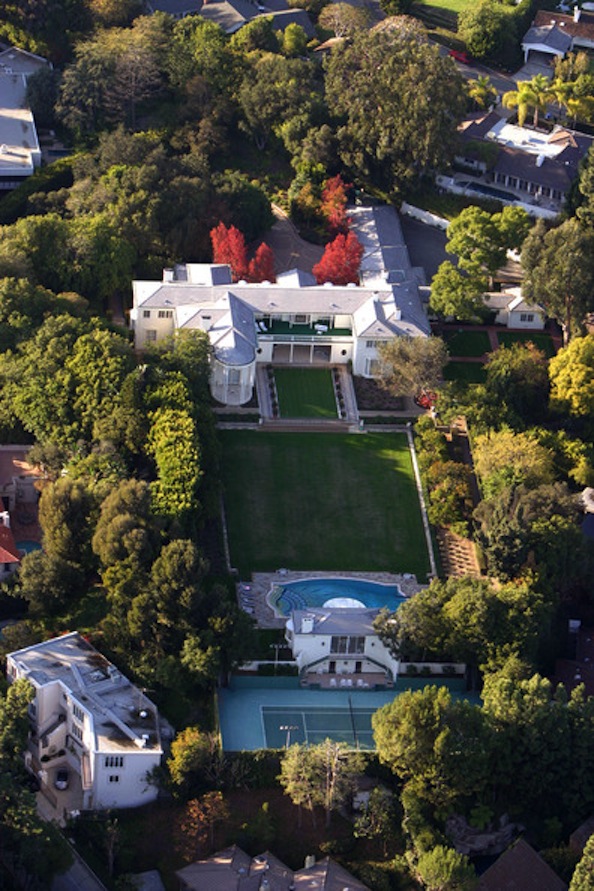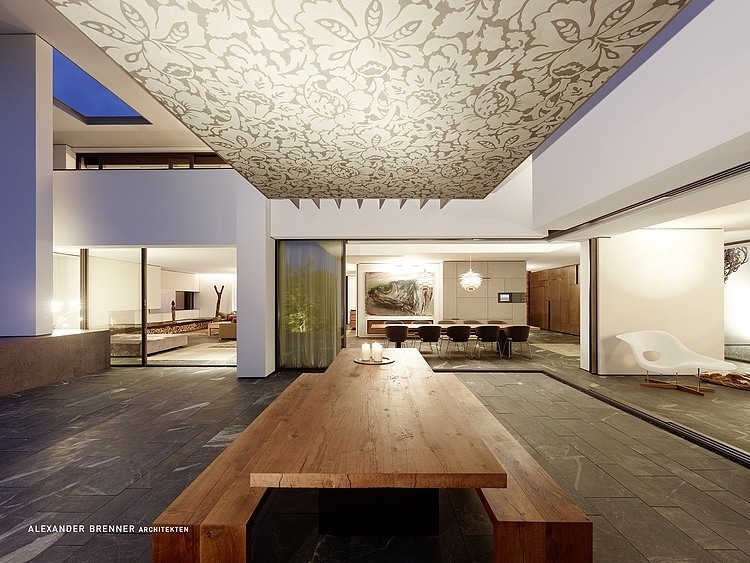
After a while our homes need a change or some updating. They can seem tired and old and in need of little refreshing. Ideally, perhaps, you might like to move to a larger home but the economy has you worried and you want to spend your money wisely. So instead, you’ve decided to renovate your home not only to perk it up but to better accommodate your current needs and lifestyle. If you haven’t thought to do so already, you might want to think about some environmentally savvy ways to renovate your home.

1. Buy reclaimed
Don’t get caught up with having to have the newest and shiniest. Think about other materials like reclaimed wood which is not only an environmentally sound choice, but sublimely handsome and growing in popularity in all sorts of home renovation projects. Reclaimed wood is a great choice for counter-tops, flooring, and walls. One CKD (certified kitchen designer) recently used reclaimed wood around a kitchen hood. In the end, you will save time, money and energy that would be required to produce a similar and newer product.
2. Deconstruct your home – don’t demolish it!
If you plan on tearing down walls or even knocking down entire rooms, walk around your home first to see what you can salvage and re-use beforehand. Not only is this eco-friendly, but it will save money in the end. If it ain’t broke, don’t fix it! Most likely there is a ton of material you can salvage and re-use. Consider everything from light fixtures, to flooring, tile, bricks, cabinets and molding. If you plan on replacing the chandelier in your dining room, instead of tossing it, think about using it in another room - maybe your kitchen, your daughter’s bedroom, even a bathroom!
3. Donate your unwanted items.
So you really don’t want that dining room chandelier in any other room. Don’t toss it, instead bring it to Goodwill or a consignment shop. Perhaps you even have a crafty friend who might enjoy repainting and re-purposing it. Another great option for your chandelier, as well as other items like appliances and cabinets, is Habitat for Humanity. Not only do they welcome all unwanted materials, but they sell all donations and 100% of the proceeds from these materials are used to build new homes for the underprivileged. With this in mind, not only are you being environmentally friendly, but you are truly giving back to the community.
4. Think energy-efficient
When you are shopping around for new appliances such as refrigerators, dishwashers and ovens look for those that are the most energy efficient. These products have the Energy Star logo right on them and will give you all the information you need. Many of these large appliances, especially the upscale refrigerators, generate a lot of electricity. For many people these high-end appliances are not only cost prohibitive initially, but they will end up costing a great deal more to run as well.
5. Consider buying pre-owned materials
Habitat for Humanity is one such retailer, but there are many across the country, some even specialize in high-end products. This can be a great and cost-effective way to redo your home. If, in the end, that SubZero fridge is an absolute must have, you could save thousands of dollars buying one that has been used for a couple of years. Cabinets may be the largest expense of a kitchen renovation, these salvage shops often have high quality cabinets in fabulous condition. It’s an idea certainly worth investigating.
6. Re-face instead of replace
As I just mentioned, the greatest expense of any kitchen remodel may very well be your cabinets. Instead of replacing them altogether, consider repainting them or simply refacing them. Most likely your cabinets are in great conditions. New doors and drawers can give seemingly tired cabinets a whole new life!
7. Use low voc paints
Low voc paints are earth-friendly and better for you and your family. Benjamin Moore, for example, a leader in paint technology and innovation since 1883, offers their Natura No-Voc Paint. This paint is practically odorless, 100% acrylic and splatter resistant. It’s self priming and carries the “Green to Promise” designation. Best of all the Natura line is available in every Benjamin Moore color!
8. Insulate
Choose a high quality insulation. The better insulated your home is, the better it is protected from the elements. Your home will stay warmer in the wintertime, allowing you to keep your thermostat at a lower setting, and cooler during those hot summer months.
9. Let the sun shine in!
Many people are starting to consider solar energy when remodeling their homes. Solar energy can impact you heating bill as well. Skylights and solar panels are known to keep energy costs down. They can be used to heat, or help heat a home, and often give enough power for small items like fountains to run.
10. Visit salvage yards and antique shops
Antique shops and consignment shops are great places to visit for items such as doorknobs, light fixtures and even mantels. Not only does this help your bottom line, but these repurposed items will add a charm and warmth to your home that simply cannot be replicated by their newer counterparts.In the end, choosing to renovate your home in an eco-friendly manner not only helps the environment but allows you to do so while giving back to your community while saving some serious money. What’s not to like about being environmentally savvy when it comes to your home?
http://freshome.com/2012/10/25/10-eco-friendly-ways-to-renovate-your-home/























 179
years ago this week the City of York voted to drop its colonial moniker
for a title more befitting of the area's history. The move, a rare show
of respect for native culture at the time, cemented the legacy of a
Mohawk word that had traveled what is now southern Ontario for over a
hundred years, being applied to lakes, passages, and rivers, before it
finally settled here.
179
years ago this week the City of York voted to drop its colonial moniker
for a title more befitting of the area's history. The move, a rare show
of respect for native culture at the time, cemented the legacy of a
Mohawk word that had traveled what is now southern Ontario for over a
hundred years, being applied to lakes, passages, and rivers, before it
finally settled here. The
name, misunderstood and confused by various old-world explorers,
bounced around the area between Lake Simcoe and Lake Huron. On various
early maps it was applied to a canoe trail on the Humber River and Lake
Simcoe itself. Later, the Humber River, before it was named by John
Graves Simcoe after a tidal estuary in northeast England, was called
Rivière Taronto after the portage trail.
The
name, misunderstood and confused by various old-world explorers,
bounced around the area between Lake Simcoe and Lake Huron. On various
early maps it was applied to a canoe trail on the Humber River and Lake
Simcoe itself. Later, the Humber River, before it was named by John
Graves Simcoe after a tidal estuary in northeast England, was called
Rivière Taronto after the portage trail. The
first colonial settlement on this part of Lake Ontario was Fort
Rouillé, a French trading post depicted in drawings with a high wooden
fence at what is now Exhibition Place, just beyond the foot of Dufferin
Street. The Seneca-Mohawk villages of Teiaiagon and Ganatsekwyagon
(precise English spellings vary) were within today's city limits at the
mouths of the Humber and Rouge rivers respectively.
The
first colonial settlement on this part of Lake Ontario was Fort
Rouillé, a French trading post depicted in drawings with a high wooden
fence at what is now Exhibition Place, just beyond the foot of Dufferin
Street. The Seneca-Mohawk villages of Teiaiagon and Ganatsekwyagon
(precise English spellings vary) were within today's city limits at the
mouths of the Humber and Rouge rivers respectively. 34
years later, John Graves Simcoe, ordered a garrison built at what is
now Fort York at the mouth of Garrison Creek. The English military
leader believed the location inside the enclosed Toronto harbour would
be easy to defend. The
34
years later, John Graves Simcoe, ordered a garrison built at what is
now Fort York at the mouth of Garrison Creek. The English military
leader believed the location inside the enclosed Toronto harbour would
be easy to defend. The  Prior
to the construction of Fort York, a second encampment would be built on
the other side of Garrison Creek. This short-lived base was destroyed
in 1813 during the Battle of York. During the fight, the British army
were forced to retreat to Kingston, leaving its armed citizens in the
streets.
Prior
to the construction of Fort York, a second encampment would be built on
the other side of Garrison Creek. This short-lived base was destroyed
in 1813 during the Battle of York. During the fight, the British army
were forced to retreat to Kingston, leaving its armed citizens in the
streets.  The
town of York recovered from its temporary occupation and grew to
surround the old fort. In 1834 the province's legislative council, the
leaders of the area around what had become the largest city in Upper
Canada, voted to incorporate the community as a city. A group of local
citizens thought then was as good a time as any to rebrand the
community.
The
town of York recovered from its temporary occupation and grew to
surround the old fort. In 1834 the province's legislative council, the
leaders of the area around what had become the largest city in Upper
Canada, voted to incorporate the community as a city. A group of local
citizens thought then was as good a time as any to rebrand the
community.



